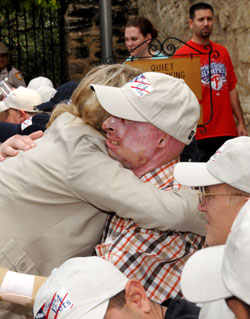Effective Communication
Businesses must communicate effectively with customers who have vision, hearing, or speech disabilities. The businesses, not the customers, are responsible for providing the tools or services that are needed for "effective communication." Businesses are not, however, required to provide any tools or services that would be an "undue burden," which means significant difficulty or expense. The type of tool or service needed depends on the nature of the communication as well as the particular customer´s disability. Additional information about the rules for "effective communication" can be found at www.ada.gov/reachingout/lesson21.htm or by calling the ADA Information Line. See Contact Information.
Examples of effective communication are:
- At a restaurant, the waiter can read the menu to a person with vision loss.
- At a grocery store, a staff person can assist a person with vision loss by locating and retrieving items from the shelves or reading price and content information to him or her.
- At an apartment rental office, the agent can provide a large print copy of a rental contract for a person who has vision loss or an audiotaped or electronic copy for a person who is blind.
- At a retail store, the sales person can write notes to answer simple questions from a customer who is deaf or has hearing loss.
- At a movie theater, staff can provide an assistive listening device for someone who has hearing loss.
- A pizza delivery service must accept calls through the telephone relay service from a customer who uses a TTY because of a speech disability.


User Comments/Questions
Add Comment/Question